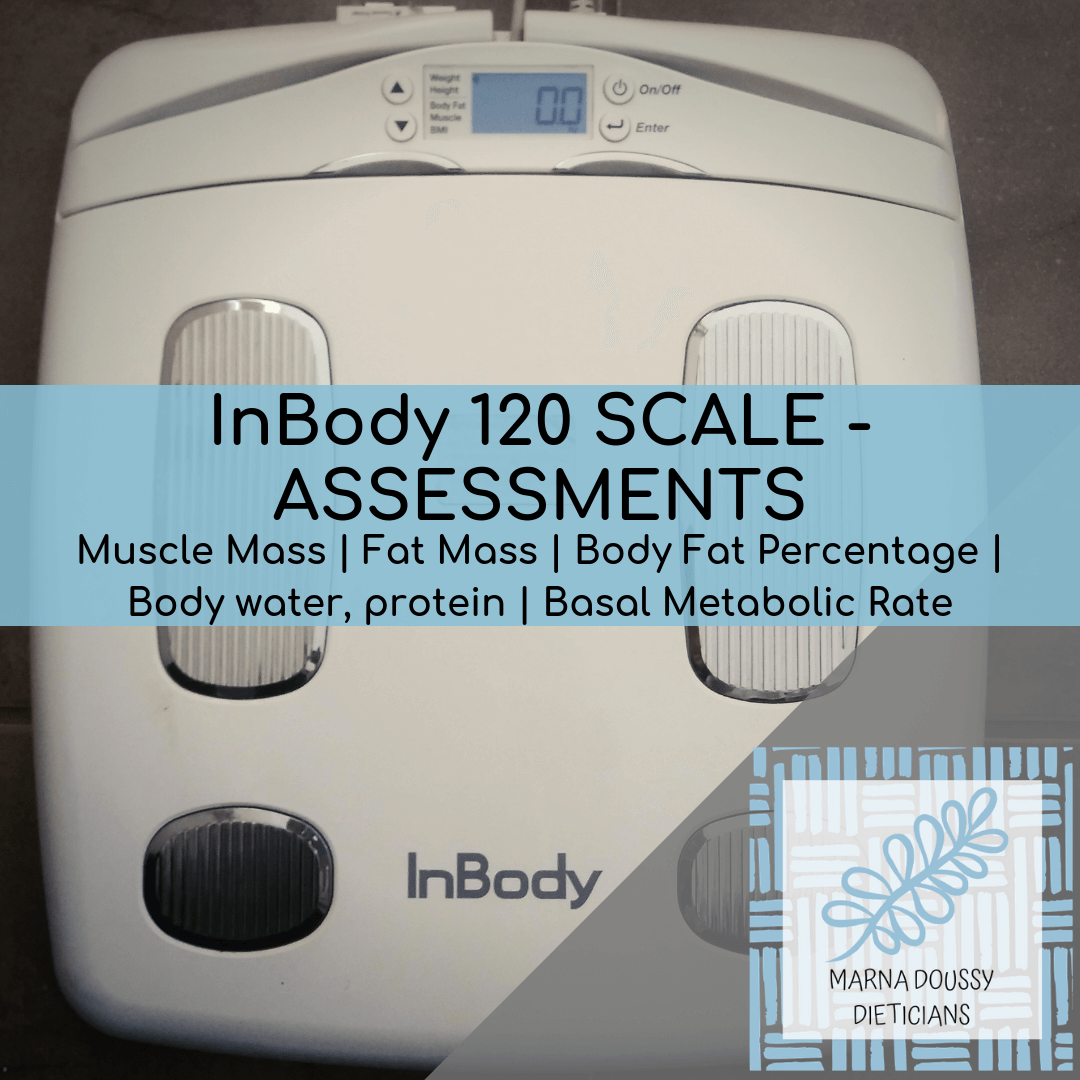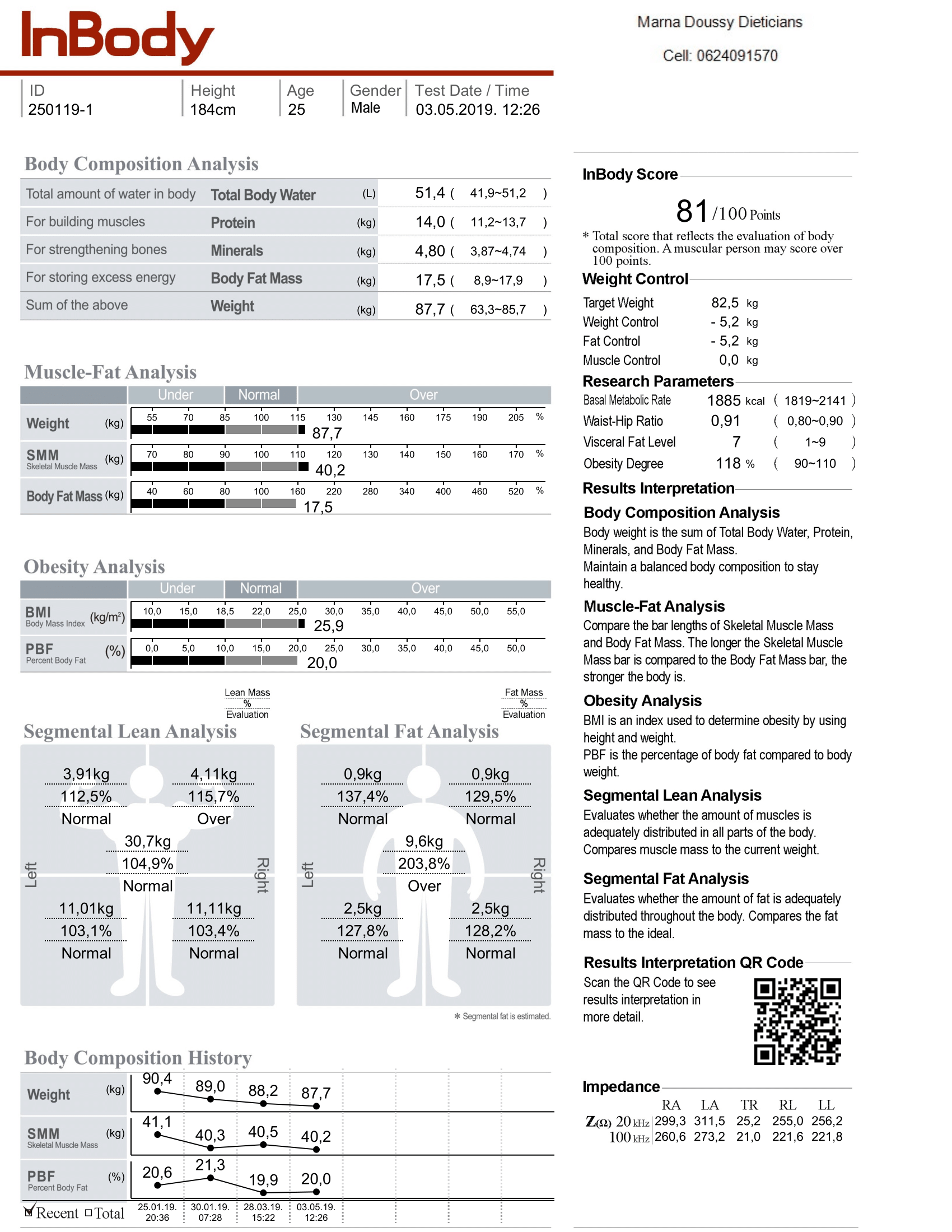
We use the InBody 120 scale for all measurements and assessments. This nifty machine provides us with extensive information on what is going on INSIDE your body…Much more than just KILOGRAMS are revealed!
WHAT?
This scale is a bioelectrical impedance scale - fancy words for saying it will send light, small electrical impulses through your body. This determines the density and differences in densities to establish where the muscles; fat; water and minerals are.
THE PROCESS!
First off, you will need to be able to place bare feet on the scale - no stockings or socks - as this inhibits the electrical impulses from going into the body.
Your hands and feet come into contact with the machine. This allows the electrical current to stream through your WHOLE body (upper and lower areas) to ultimately run a full body composition. It is precise and accurate.
If only your feet came in contact, the results will only be a “true” reflection of fat and muscles ratios for the lower body (the upper body’s values will be estimated). And vice versa.
RESULTS!
The test runs for about 1 minute. Then it pushes out a complete report. Including a score out of 100.
This report contains all the juicy information we are after! No secrets can be kept from it!
It gives the full body composition:
- Water, protein, minerals available in the body.
- Fat mass in kilograms
In this composition, it also provides the “normal”/healthy ranges for your current age, gender and height. With this, we can see where we should be or aim to be.
In easy to understand graphs the muscle mass is compared to fat mass alongside the weight. This graph is used to determine whether the relationship between these 3 measures are optimal or not. And you can then clearly see where you should change or improve. Since it measures both muscle and fat, the fat percentage is accurately given.
The report includes the body mass index (BMI) and gives the basal metabolic rate that was measured. This refers to the metabolic rate at rest (where no activity or stress factors are considered). The metabolic rate also gets compared to the “normal”/healthy ranges for your current age, gender and height.
It also provides vital information like visceral fat (dangerous fat around organs) and waist-to-hip ratios. These measurements are used to determine the risks for cardiovascular disease or related conditions like high blood pressure.
